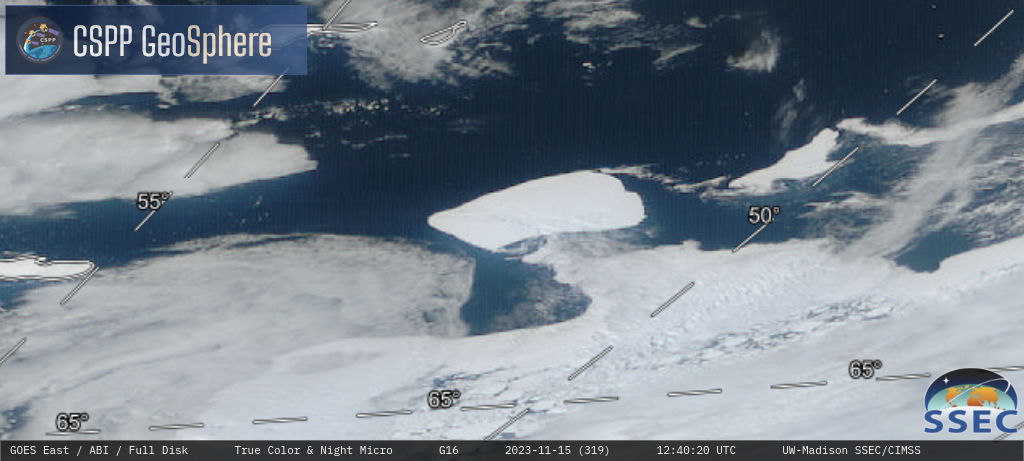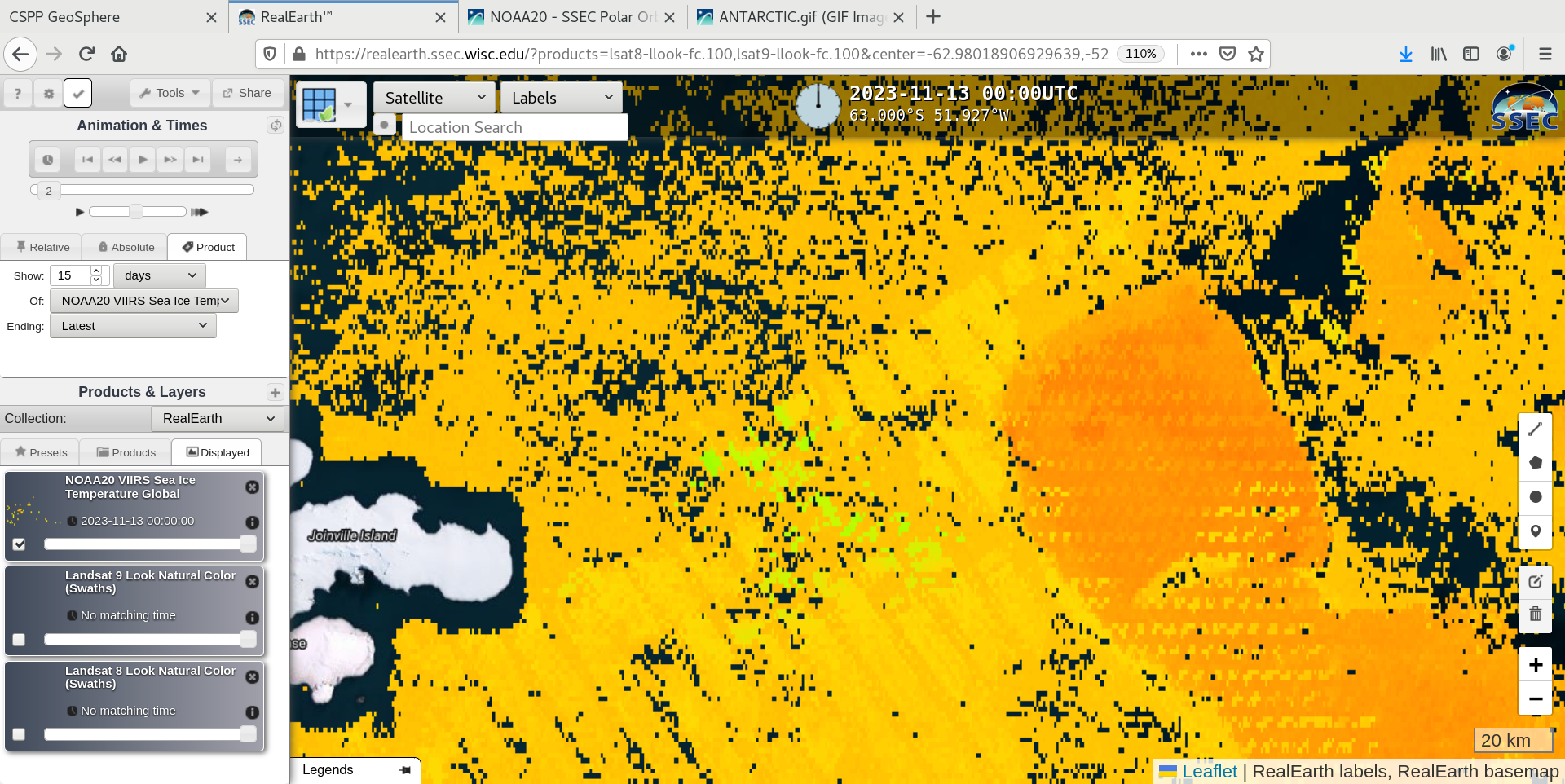Iceberg A23a in the Antarctic Ocean
10-minute interval GOES-16 (GOES-East) True Color RGB images (source) from 0930-1900 UTC on 13-26 November 2023 (above) showed Iceberg A23a just east-northeast of Joinville Island (at the tip of the Antarctic Peninsula). Although cloud-free periods were scarce during those 14 days, even on most of the cloudy days the silhouette of A23a was evident. During that time, A23a was the largest iceberg in the world (although it was smaller in area than recent icebergs such as A68).On 2 days in mid-November when cloud cover was at a minimum, a toggle between “Natural Color” RGB images from Landsat-9 (at 1239 UTC on 14 November) and Landsat-8 (at 1233 UTC on 15 November) is shown below (source) — which revealed a small amount of westward drift during that 24-hour period.

Natural Color RGB images from Landsat-9 (at 1239 UTC on 14 November) and Landsat-8 (at 1233 UTC on 15 November) [click to enlarge]




